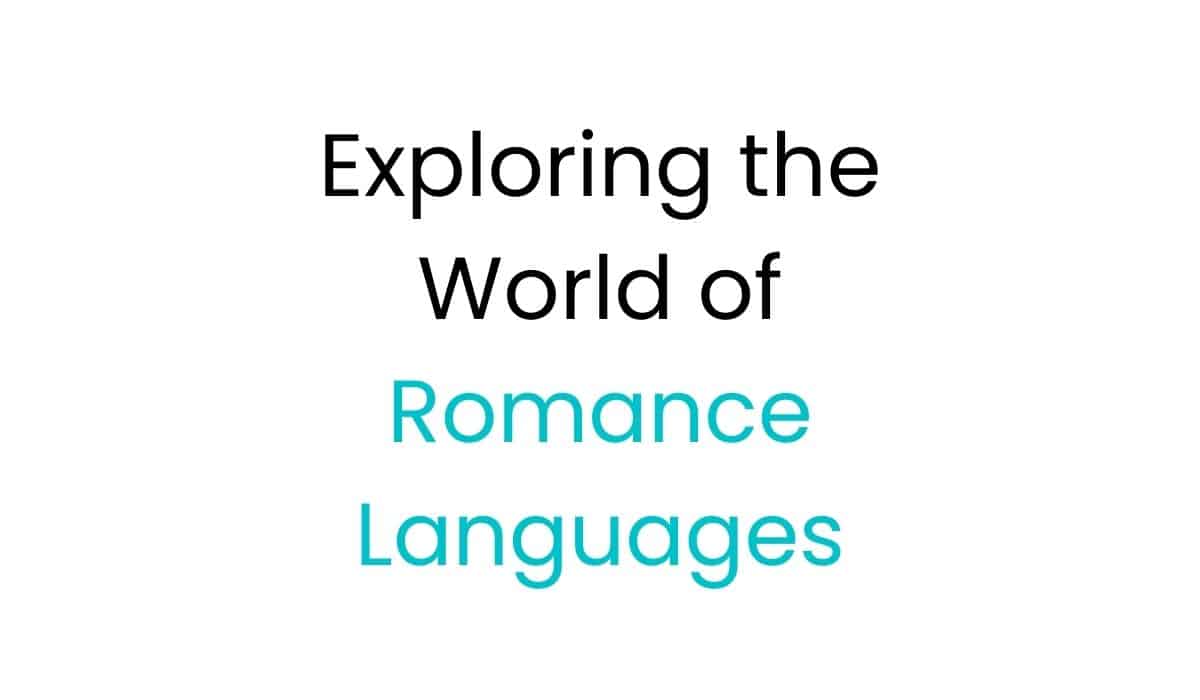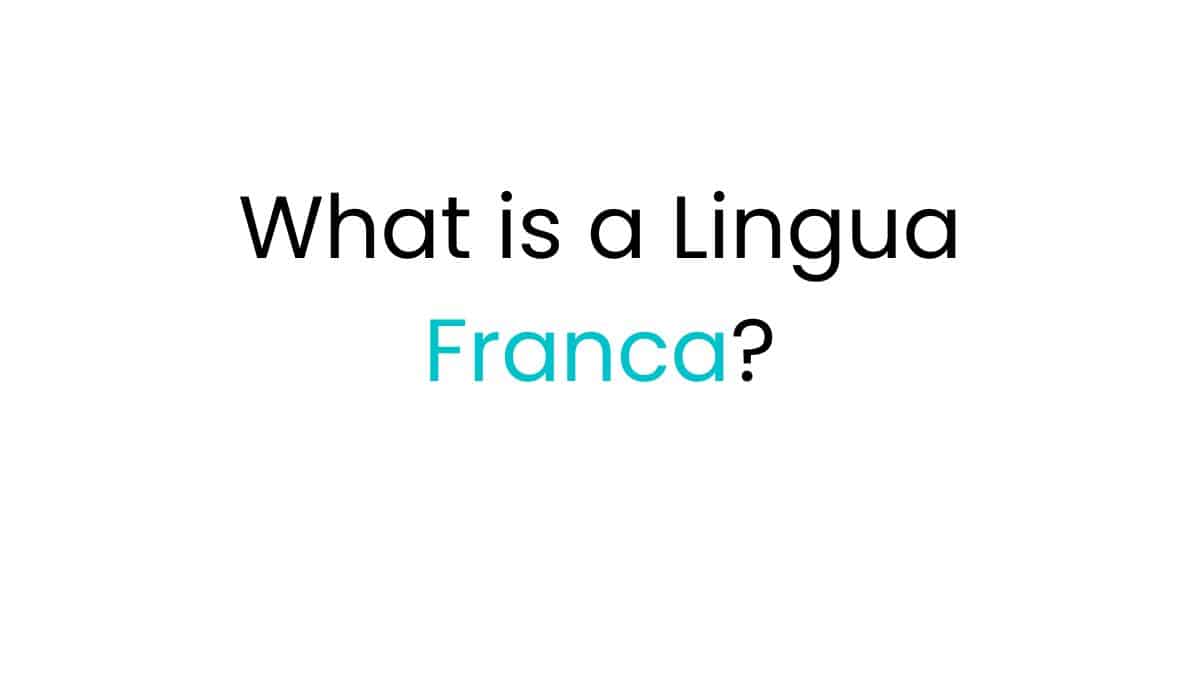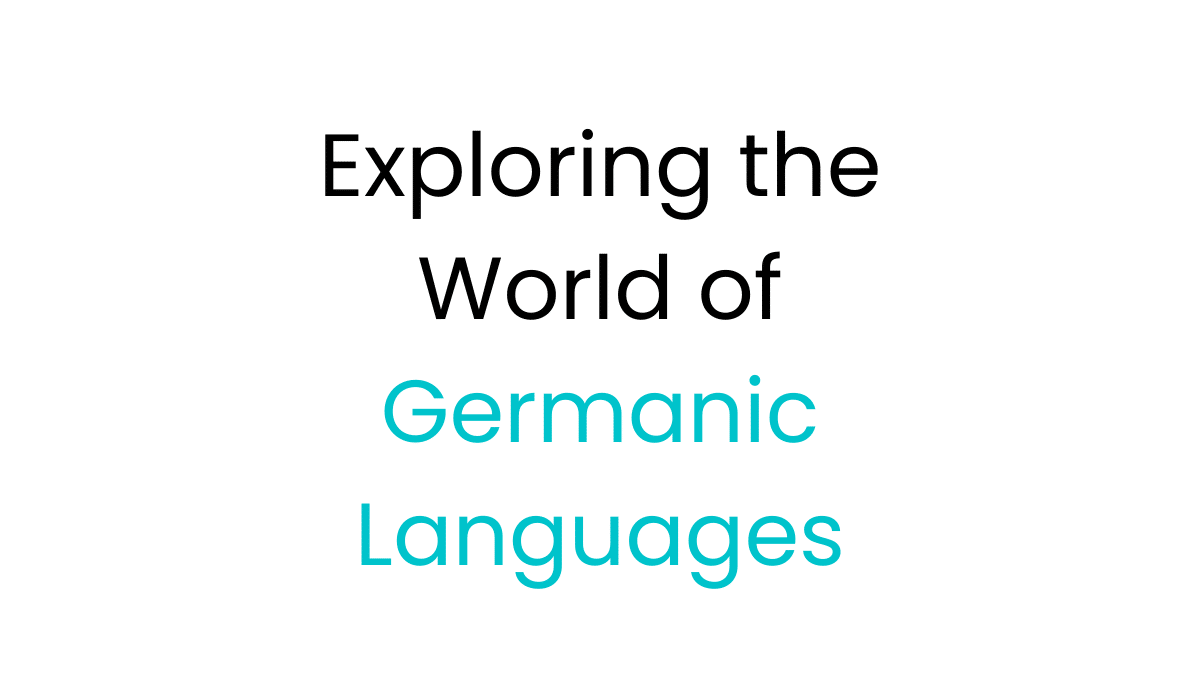Introduction to Scandinavian Languages
In this post, we will talk about the Scandinavian languages, its origin, historical background and their geographical distribution.
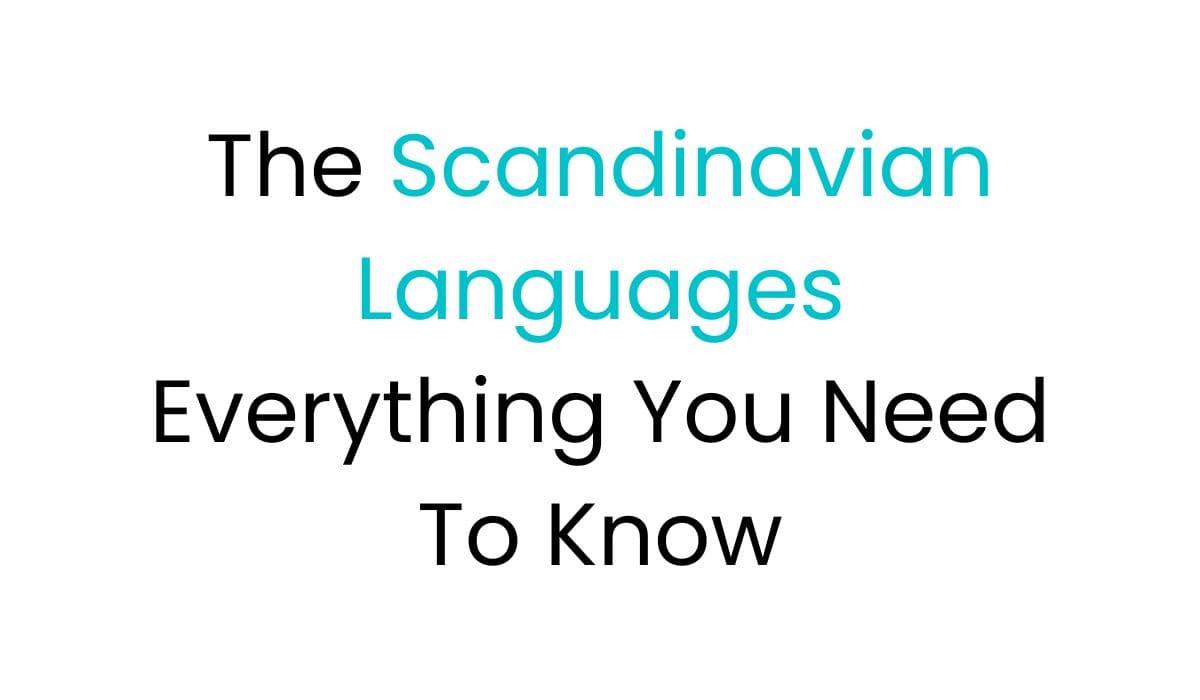
Definition and Overview
Scandinavian languages primarily consist of three main tongues: Swedish, Danish, and Norwegian. These languages belong to the North Germanic branch of the Germanic family, part of the wider Indo-European language group. Together, they share common roots, making them intricately intertwined, yet each has its own unique flavor.
Historical Background
The history of Scandinavian languages stretches back to the Viking Age, a time when Norse dialects filled the lands of present-day Scandinavia. These languages evolved from Old Norse, the language spoken by the Vikings. Over centuries, as kingdoms formed and nations emerged, different dialects began to rise, leading to the languages we know today.
Importance in Modern Society
In contemporary times, understanding Scandinavian languages is more than just a matter of communication. These languages open doors to rich cultures, fascinating literatures, and picturesque landscapes. Additionally, with globalization, these languages have also garnered interest from those looking to travel, work, or build relationships in Nordic countries.
The Major Scandinavian Languages
Swedish
Overview and Geographic Distribution
Swedish is the most widely spoken Scandinavian language, with around 10 million speakers. It’s primarily spoken in Sweden, where it holds the status of the official language, and in parts of Finland, where it is one of the official languages.
Linguistic Features and Characteristics
Swedish is recognized for its melodic quality and distinctive pronunciation. It employs a system of vowel harmony and a musical pitch accent, which gives it a singsong quality. The vocabulary is largely influenced by German and French, showcasing the history of trade and culture in the region.
Dialects and Regional Variations
Sweden boasts a rich tapestry of dialects that vary significantly from one region to another. For instance, the dialect of Skåne in the south sounds quite different compared to the dialects of Norrland in the north.
Danish
Overview and Geographic Distribution
Danish, with about 6 million speakers, is primarily spoken in Denmark, Greenland, and the Faroe Islands. It’s known for its unique blend of old and modern influences.
Linguistic Features and Characteristics
Danish is notable for its use of glottal stops and a softer sounding pronunciation compared to its Scandinavian counterparts. Often considered more challenging to pronounce, Danish does have similarities in grammar and vocabulary to Swedish and Norwegian.
Dialects and Regional Variations
Like Swedish, Danish has several dialects characterized by distinct sounds and vocabulary. The dialects can vary widely between urban and rural areas, reflecting the diverse cultural heritage of each region.
Norwegian
Overview and Geographic Distribution
With around 5 million speakers, Norwegian is spoken mainly in Norway. It is interesting to note that there are two official forms of the language: Bokmål and Nynorsk.
Linguistic Features and Characteristics
Norwegian is relatively straightforward grammatically when compared to its Scandinavian siblings. Its vocabulary shares roots with both Danish and Swedish, but the word constructions often align more closely with Old Norse.
Bokmål vs. Nynorsk
Bokmål is the most commonly used form, influenced by Danish, while Nynorsk is based on rural Norwegian dialects. This dual structure reflects Norway’s cultural diversity and history.
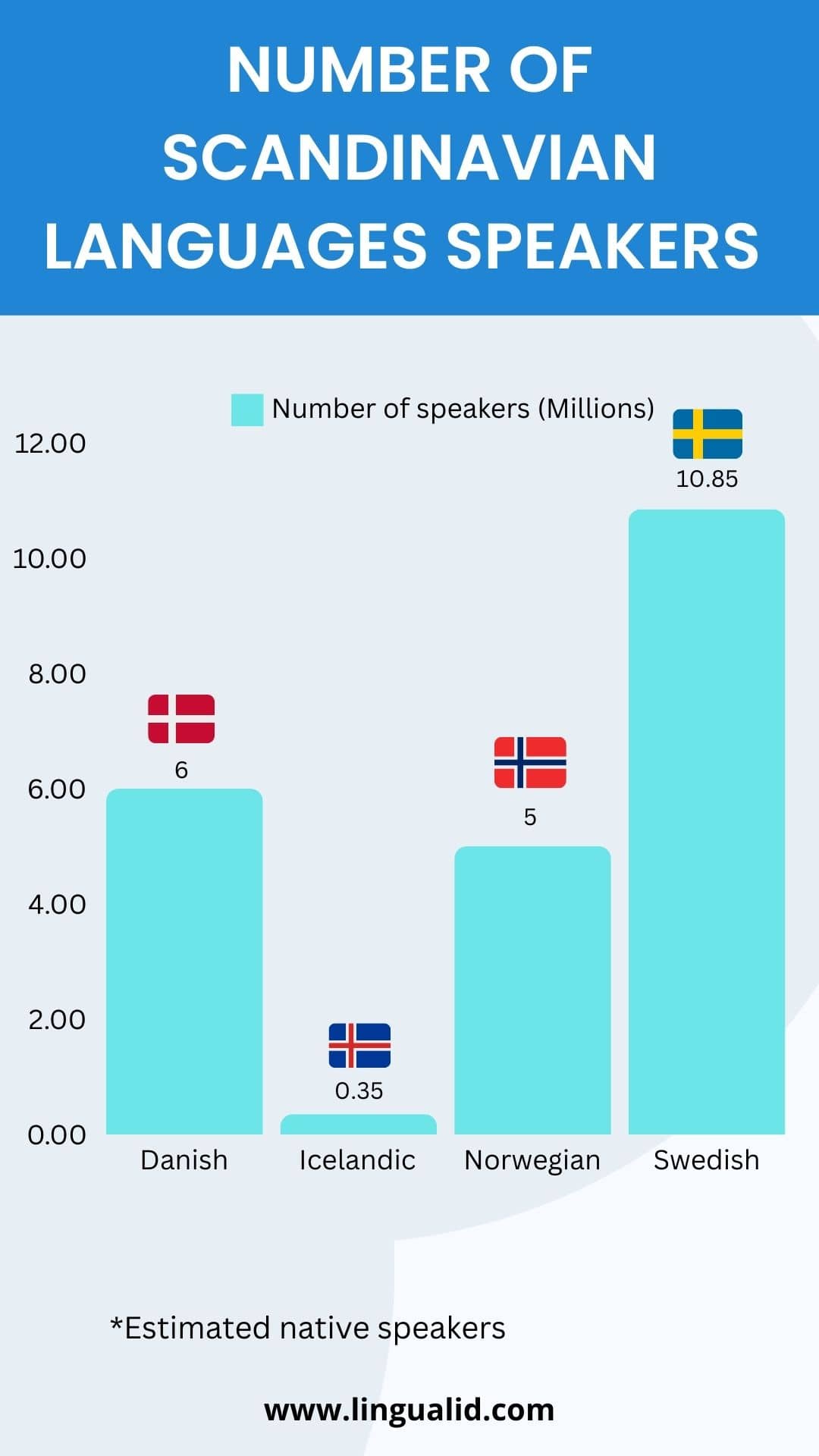
Other Scandinavian Languages and Dialects
Icelandic
Historical Significance
Icelandic has preserved much of the characteristics of Old Norse, which makes it a treasure trove for linguists. It is not just a means of communication but a bridge to the past.
Linguistic Features
Icelandic is known for its complex grammatical structures and rich vocabulary, which has changed little over the centuries. Its pronunciation can sometimes be tricky for newcomers but is deeply rewarding.
Preservation of Old Norse
Iceland takes pride in maintaining its language, which closely resembles that of the Vikings, and there are efforts to continue this tradition while also modernizing the language as needed.
Faroe Islands Language
Overview and Cultural Context
The Faroese language is spoken by about 66,000 people in the Faroe Islands and is closely related to Old Norse. It’s an essential part of the islanders’ cultural identity.
Linguistic Characteristics
Faroese exhibits a blend of Old Norse and influences from Danish. It has unique grammatical structures and vocabulary, which can be intriguing yet challenging for learners.
Current Status and Challenges
While the language is seeing a revival, the challenges include competition from Danish and globalization’s influence on communication, which often sidelines local dialects.
Sami Languages
Overview and Cultural Significance
The Sami languages are a group of Uralic languages spoken by the Sami people across northern Norway, Sweden, Finland, and Russia. They hold immense cultural significance and reflect the unique heritage of the Sami communities.
Linguistic Diversity
There are several Sami languages, including Northern Sami, Southern Sami, and Lule Sami, each with its own variations and dialects. These languages differ considerably, showcasing rich linguistic diversity.
Challenges of Language Preservation
Sadly, many Sami languages are endangered, with efforts underway to promote their use in schools and media to ensure they thrive for future generations.
Comparison Among Scandinavian Languages
Similarities and Mutual Intelligibility
Swedish, Danish, and Norwegian share a considerable amount of vocabulary and grammar, which allows speakers of one language to often understand the others to a significant extent.
Differences in Grammar and Vocabulary
While the similarities are strong, differences arise in pronunciation, regional expressions, and certain grammatical structures, leading to delicate nuances that reflect each culture’s identity.
Influence of Other Languages and Cultures
The historical encounters with various cultures have influenced vocabulary and pronunciation in Scandinavian languages, enriching them over time and blending them with their surroundings.
Learning and Teaching Scandinavian Languages
Resources and Tools for Learning
Many online platforms, such as Duolingo and Babbel, offer engaging courses in Swedish, Danish, and Norwegian. Language apps and podcasts further support learners, making the process fun and interactive.
Language Education in Schools
In Scandinavia, learning a Scandinavian language often begins early in school, with students commonly learning at least two languages. This structure greatly fosters multilingualism and cultural awareness.
Online Communities and Language Exchange
Online platforms like Tandem and Meetup can connect learners worldwide, allowing for real-life practice through language exchange with native speakers.
Conclusion
Understanding Scandinavian languages enhances cultural connections and opens new avenues for communication. Whether you are diving into Swedish literature, enjoying Danish films, or contemplating the rich folklore of Norway, the joy of learning these languages is indeed rewarding. Embrace the challenge, soak in the culture, and you might just find your world expanding in delightful ways!
FAQs
- What are the primary differences between Swedish, Danish, and Norwegian?
- Swedish and Norwegian have more similarities in terms of vocabulary and syntax, while Danish has a distinct pronunciation that can make it harder for Swedish and Norwegian speakers to understand.
- How similar are the Scandinavian languages to each other?
- They share a common ancestry and have numerous mutual vocabulary and grammatical similarities, making them relatively easy for speakers to learn from one another.
- What is the best way to start learning a Scandinavian language?
- Start with basic phrases and daily vocabulary, use language apps, or find someone to practice speaking with regularly.
- Are there resources specifically for learning Icelandic and Faroese?
- Yes, online courses, textbooks, and even YouTube channels are dedicated to teaching these languages and their unique characteristics.
- How are the Sami languages being preserved and promoted today?
- Efforts include teaching in schools, creating bilingual education programs, and producing media in Sami languages to raise awareness and encourage usage among younger generations.
Oualid Cheddadi is the founder of Lingualid, a platform that inspires independent language learners worldwide, regardless of the language they are learning. The name “Lingualid” is derived from the Portuguese word for “language,” “língua,” and the last three letters of Oualid’s name, “Lid.”

